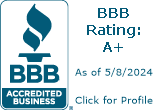Solo 401k contributions are a powerhouse in your retirement plan for several reasons:
- They can be tax deductible. This can result in paying less taxes for money you’ve earned
- Contributions can be Roth, allowing your investments to grow tax-free
- High contribution limits for a Solo 401k plan can help you supercharge aggressive wealth growth
The Solo 401k plan by Nabers Group is the most flexible and compliant plan available. That’s because we designed a plan we would want to use ourselves as fellow business owners. Therefore, we made the total allowable contributions in our documents as flexible as possible. Plus, you can contribute on your own schedule and there are no minimum contributions. However, before you start contributing, read on to learn about guidelines, rules, deadlines and best practices for making contributions.
Types of Contributions
The Solo 401k is a Qualified Retirement Plans (QRP). There are two main types of QRP Solo 401k contributions:
- Employee (salary deferral) Contributions
- Employer (profit sharing) Contributions
You are both the business owner and the employee of your business. This means you can take advantage of all three types of Solo 401k contributions.
Contribution Limits
Your maximum Solo 401k contribution is $69,000 per participant per year. If you are 50 or older, you can contribute an extra $7,500 bringing your total contribution limit per plan to $76,500.
If you and your spouse both contribute to the Solo 401k plan, you can each contribute $69,000 (or $76,500 – depending on your age).
Contribution limits are based on your earnings from the business connected to your Solo 401k plan.
Employee (salary deferral) contributions: The Department of Labor allows a maximum employee salary deferral contribution of $23,500. The employee contribution may be up to 100% of your net compensation. Employee contributions may be pre-tax or designated Roth contributions.
Your total employee contribution limit is across all plans where you are an employee. Therefore, if you contribute $10,000 per year to a “regular” job 401k, you could contribute the remaining $13,500 to your Solo 401k as an employee contribution.
Example: Claire makes $22,000 annually in her sole proprietorship consulting business. After expenses she nets $18,450 in compensation shown on her Schedule C of her tax return. Claire does not contribute to any other 401k plan. Because Claire can contribute up to 100% of her net compensation as an employee salary deferral contribution, she could contribute $18,450 to her Solo 401k plan. If she chooses to contribute with pre-tax funds, the $18,450 can also be a tax-deduction.
Employer (profit sharing) contributions: Your Solo 401k employer contribution can be 20-25% of your net profits from the business.
Contribution Deadlines
You’re the employee and employer contributions should be made by the due date of tax return for your business. If you file an extension for your tax return, you can contribute up to the extension date. Contribution deadlines are also explained in IRS Publication 560.
Refer to the chart on page 3 of the publication for more information. Remember, the Solo 401k is a Qualified Plan: Defined Contribution Plan. The publication goes on to state that contributions must be made by the “Due date of employer’s return (including extensions)”.
Who Writes the Check?
Solo 401k contributions are calculated based on your net earnings. This means as the employee/employer of your business, you can contribute a portion of what you earn. The contribution is not made directly from the business bank account.
After you get paid as the employer/employee of your business, you write the check for the contribution into the plan.
Roth Contributions
Only elective (salary-deferral) contributions and catch-up contributions can be Roth funds. As of 2018, you can contribute up to $23,500 per participant per year in Roth funds. Catch-up contributions may be another $7,500. This brings your total possible Roth contributions to $31,000 if you are age 50 or older. Employer (profit-sharing) contributions may not be Roth funds.
Because Roth contributions come from after-tax monies, they are not tax-deductible.
Have more questions about how contributions relate to your business? We’ve got answers:
- Sole Proprietorships: Solo 401k Contributions
- Solo 401k Contributions for an LLC (single or multi-member)
- LLC & Partnership Contributions to a Solo 401k
- Solo 401k Contributions for a Corporation





